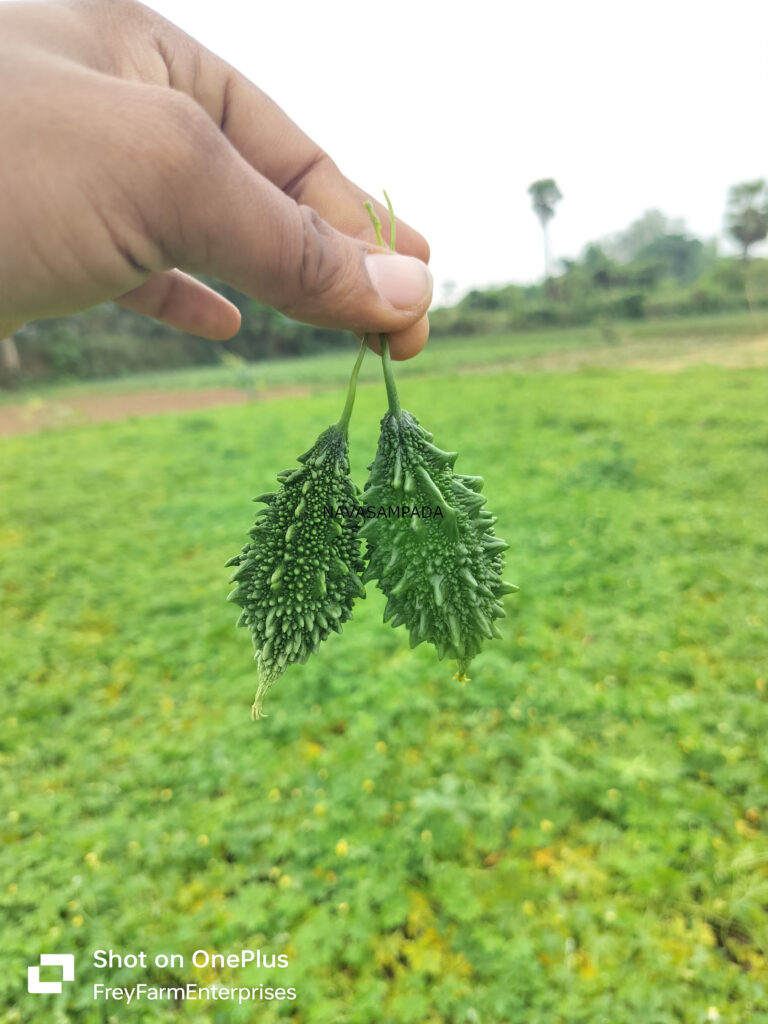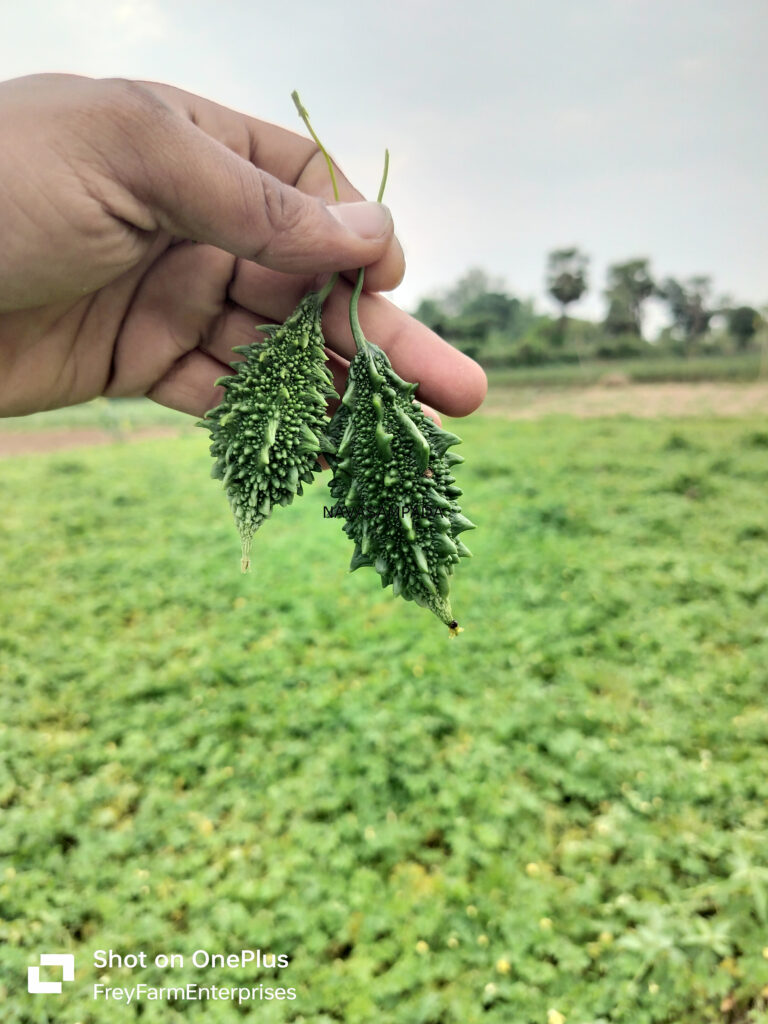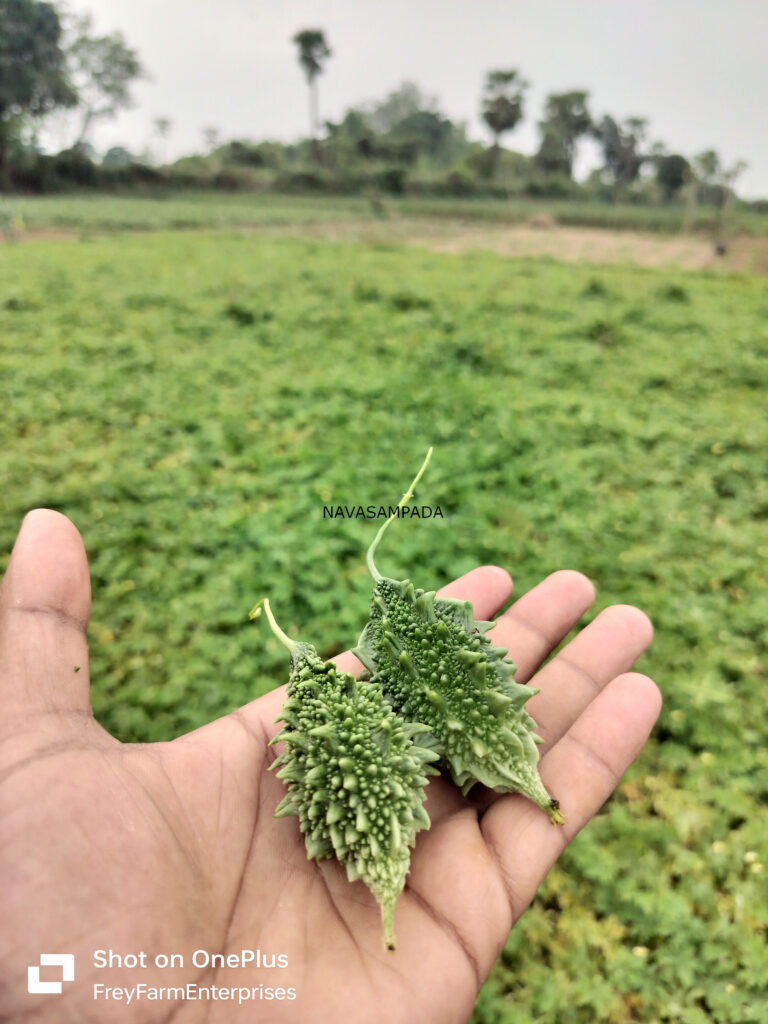Bitter Gourd, also known as bitter melon or karela, is a tropical and subtropical vine cultivated for its edible, bitter-tasting fruit. It thrives in warm climates and is a popular vegetable in many Asian, African, and Caribbean cuisines. Successfully growing bitter gourd requires proper planning, good agricultural practices, and consistent care. This guide provides a step-by-step approach to cultivating bitter gourd for both commercial and personal use.
Climate and Soil Requirements
Climate: Bitter Gourd thrives in warm, humid conditions. The optimal temperature range is 25°C to 30°C (77°F to 86°F). It requires about 68 hours of sunlight daily for healthy growth.
Soil: Choose fertile, well drained soil with a slightly acidic to neutral pH, ideally between 6.0 and 7.0. Sandy loam or loamy soil is best. Enrich the soil with organic matter like compost or well rotted manure for better fertility.
Land Preparation
Plowing: Loosen the soil to a depth of 1520 cm to improve aeration and drainage. Clear the land of any weeds, rocks, or debris.
Bed Formation: Form raised beds or ridges spaced 23 feet apart. This enhances drainage and ensures the vines have a healthy growing environment.
Seed Selection and Preparation
Variety: Choose high yielding, disease resistant varieties suited to your local climate and growing conditions. There are several types of Bitter Gourd, ranging from long and smooth to warty varieties.
Seed Treatment: Soak seeds in warm water for 46 hours to improve germination. You may also treat seeds with a fungicide to prevent soilborne diseases.



Sowing the Seeds
Time of Planting: Bitter Gourd can be grown year round in tropical climates but is typically sown in spring or summer. The ideal planting season varies by region.
Spacing: For direct sowing, plant seeds 1.5 to 2 feet apart in rows that are spaced 56 feet apart. Alternatively, start seeds in nursery trays and transplant seedlings once they are 34 weeks old.
Sowing Depth: Plant seeds about 12 cm deep and cover lightly with soil. Ensure the soil remains moist during the germination phase, which typically takes 810 days.
Watering and Irrigation
Water Requirements: Bitter Gourd requires consistent moisture, particularly during the flowering and fruiting stages. Water the plants regularly to keep the soil evenly moist, but avoid waterlogging, which can cause root rot.
Irrigation Systems: Drip irrigation is the most effective method, as it delivers water directly to the roots and minimizes fungal diseases by keeping the foliage dry. Furrow or sprinkler irrigation is also an option, depending on water availability.
Providing Support for the Vines
Trellis System: Bitter Gourd is a climbing vine, so it needs support to grow vertically. Install trellises, stakes, or mesh nets to guide the vines upward. This not only makes harvesting easier but also reduces the risk of pest damage and promotes better air circulation.
Pruning: Regularly trim side shoots and dead leaves to maintain plant health, improve air circulation, and encourage fruiting.
Fertilization
Organic Fertilizers: Before planting, incorporate 1015 tons of compost or well rotted manure per acre to improve soil fertility.
Chemical Fertilizers: Apply an NPK (Nitrogen Phosphorus Potassium) fertilizer at a ratio of 60:30:30 kg per acre. Apply half of the nitrogen at planting and the rest before flowering. Additionally, ensure the plants receive micronutrients like zinc and boron through foliar sprays or soil application.
Side Dressing: Apply a side dressing of nitrogen during the flowering stage for improved growth and yield.
Weed Management
Manual Weeding: Regularly remove weeds, especially in the early stages of plant growth, to reduce competition for nutrients and sunlight.
Mulching: Apply organic mulch around the plants to help retain moisture, suppress weed growth, and regulate soil temperature. Materials like straw, leaves, or grass clippings work well.
Pest and Disease Control
Common Pests: Bitter Gourd is prone to pests like aphids, whiteflies, fruit flies, and red pumpkin beetles. Use neem oil or insecticidal soap as a natural remedy to control these pests. Insect nets or row covers can also protect plants from pest invasions.
Diseases: Fungal diseases like powdery mildew, downy mildew, and blight can affect Bitter Gourd. Apply copper based fungicides at the first sign of infection. Crop rotation and removing infected plant parts can help minimize disease spread.
Pollination
Flowers: Bitter Gourd has both male and female flowers. Bees and other pollinators are essential for successful pollination. However, if natural pollination is insufficient, you can use a soft brush to transfer pollen from male to female flowers to improve fruit set.
Harvesting
When to Harvest: Bitter Gourd typically takes 5070 days to mature, depending on the variety and growing conditions. Harvest when the fruits are still tender and green—typically around 810 cm in length. If left too long, the fruit becomes bitter and turns yellow.
Frequency: Harvesting can be done every 23 days once the vines begin to produce fruit. Regular harvesting promotes higher yields and encourages further fruiting.
Postharvest Handling
Sorting and Grading: Sort harvested Bitter Gourds by size and quality. Remove damaged or overly ripe fruits to maintain quality.
Storage: Bitter Gourd has a short shelf life. Store the fruits in a cool, dry place or refrigerate to extend freshness. Ideal storage temperatures are around 1012°C with high humidity.
Packaging: Pack the fruits in breathable containers like baskets or cartons to avoid bruising and maintain freshness during transportation.
Crop Rotation and Soil Health
Crop Rotation: Avoid planting Bitter Gourd in the same location for consecutive seasons to prevent soil depletion and reduce pest cycles. Rotate with non cucurbit crops like legumes or tomatoes to replenish soil nutrients.
Soil Fertility: Incorporate organic fertilizers, and if needed, use green manures like clover or beans to improve soil health.
Additional Tips for Success:
Intercropping: Bitter Gourd can be intercropped with other crops such as tomatoes, chilies, or corn to maximize space and reduce pest pressure.
Pruning and Training: Regularly prune side branches to direct energy into fruit production and improve plant structure.